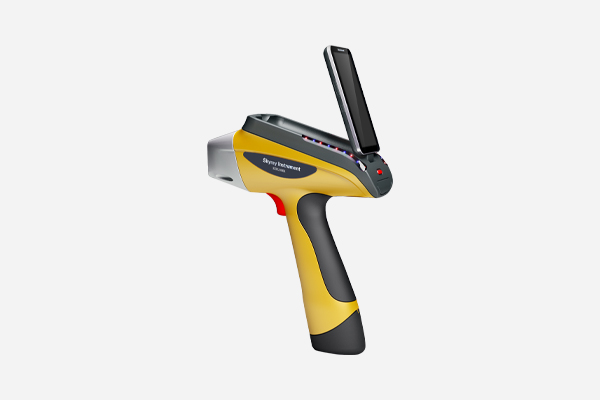Element Analysis | RoHS Analysis | RoHS Testing | XRF Spectrometer

What is Element Analysis
Element analysis is the scientific process of identifying and quantifying the chemical elements that make up a material. It involves detecting elements at both trace and bulk levels to provide a comprehensive understanding of the material’s composition. This analysis plays a crucial role in maintaining product quality, ensuring safety, and meeting strict regulatory standards. By offering precise data on the presence and concentration of elements, element analysis supports industries such as manufacturing, electronics, metals, food, and pharmaceuticals in preventing contamination, enhancing performance, and delivering products that are reliable and compliant with global requirements.
Why Element Analysis is Important
The importance of element analysis lies in its ability to safeguard product quality and improve performance while reducing production costs by identifying inconsistencies early. It ensures regulatory compliance, minimizes material waste, and prevents harmful elements from reaching end users. Additionally, element analysis plays a vital role in environmental protection, helping industries adhere to global sustainability standards while delivering safer, more reliable products to consumers.
Who Needs Element Analysis



Foundry
Home Appliance
Metal & Alloy
Definition of XRF Spectrometer
The XRF spectrometer plays a vital role in industries such as manufacturing, mining, electronics, plastics, and environmental testing. It ensures compliance with critical regulations like RoHS by detecting hazardous substances such as lead, mercury, and cadmium. In manufacturing, it verifies raw material composition, preventing defects and ensuring consistent product quality. For the metals industry, it determines alloy accuracy, while in environmental testing, it identifies toxic elements in soil and water.
Why XRF Spectrometer is Important
What makes the XRF spectrometer invaluable is its ability to deliver rapid and accurate results, supporting quality control, regulatory compliance, and material analysis. Its non-destructive nature preserves the integrity of samples, saving time and costs for businesses. By offering a reliable solution for detecting and quantifying elements, the XRF spectrometer enhances product performance, safeguards consumer safety, and ensures adherence to global standards across multiple industries.
About RoHS 1.0
The RoHS2 Directive, 2011/65/EU, prohibits the use of lead and other potentially harmful compounds such as cadmium, mercury, chromium VI, PBBs, and PBDEs in electrical and electronic equipment. RoHS restricts these compounds to 0.1% or 1,000 ppm (with the exception of cadmium, which is restricted to 0.01% or 100 ppm) by weight of homogeneous material. Directive 2015/863, issued on June 4, 2015, revised Directive 2011/65/EU to include four more phthalates, bringing the total number of prohibited compounds to ten. Products in categories 1–7, as well as 10 and 11, must be compliant by July 22, 2019. Products in categories 8 and 9 must conform by July 22, 2021.
The EU RoHS directive is closely connected to the Waste Electrical and Electronic Equipment Directive (WEEE) 2002/96/EC, which establishes collection, recycling, and recovery objectives for electrical products. Similar rules exist in various parts of the world, including China, Japan, South Korea, the United States, Norway, and Turkey. Our chemical specialists assist you in reducing the risk of non-compliance with global and national restricted chemicals rules.
About RoHS 2.0
RoHS 2.0, officially known as Directive 2011/65/EU, is an update to the original Restriction of Hazardous Substances (RoHS) directive, aimed at limiting the use of specific hazardous materials in electrical and electronic equipment (EEE) within the European Union. This directive, which came into effect in July 2011, expands on RoHS 1 by covering a wider range of products, including medical devices, monitoring and control instruments, and all other electrical and electronic equipment not previously specified. It mandates that manufacturers, importers, and distributors ensure their products comply with restrictions on substances such as lead, mercury, cadmium, and certain phthalates to minimize environmental pollution and health risks. Companies must undergo compliance assessments, issue Declarations of Conformity (DoC), and mark products with the CE symbol to indicate adherence to RoHS regulations before they can be sold in the EU market.
To strengthen enforcement, RoHS 2.0 also introduced additional documentation requirements, making manufacturers responsible for maintaining compliance records and demonstrating adherence through technical files. The directive works closely with the Waste Electrical and Electronic Equipment (WEEE) directive, which governs the collection, recycling, and disposal of electronic waste, ensuring a comprehensive approach to environmental protection. While most electrical and electronic products must comply, RoHS 2.0 provides certain exemptions for items where restricted substances are essential, such as military equipment and large-scale industrial tools. Organizations can certify compliance through internal declarations or third-party testing to verify that their products meet the regulatory limits for hazardous substances.
What is RoHS Testing
Manufacturers are responsible for guaranteeing RoHS compliance. Third-party laboratory testing guarantees that all production batches are thoroughly tested for all hazardous chemicals listed in RoHS.
Our RoHS testing ensures compliance with RoHS, allowing you to confidently sell your products in the EU market. Our testing procedure is rapid and adaptable, and it can be included into your product’s quality control inspection. To achieve impartial findings, we analyze random samples from your production rather than samples specified by the plant. You will receive a complete report indicating if your product passed or failed the RoHS compliance test.
Why RoHS Testing is Important
RoHS testing is important because some banned materials, as discussed in this article, are environmentally dangerous. They are largely recognized for polluting landfills and are even deemed toxic due to the occupational exposure that occurs during manufacture and disposal. RoHS Compliance Testing is generally recognized as one of the most critical standard procedures for large or emerging manufacturers, retailers, distributors, and recyclers of electrical and electronic components. It even covers equipment sold and used within the European Union.
Who Must do ROHS Testing



Semicon
EV Car
Oil & Gas















